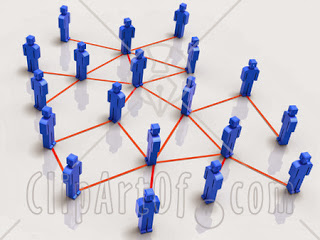There are four basic types of marketing channels:
Here's a bit of information about each one.
[h=2]Direct Selling[/h]Direct selling is the marketing and selling of products directly to consumers away from a fixed retail location. Peddling is the oldest form of direct selling.
Modern direct selling includes sales made through the party plan, one-on-one demonstrations, personal contact arrangements as well as internet sales.
A textbook definition is: "The direct personal presentation, demonstration, and sale of products and services to consumers, usually in their homes or at their jobs."
Consumers benefit from direct selling because of the convenience and service benefits it provides, including personal demonstration and explanation of products, home delivery, and generous satisfaction guarantees. In contrast to franchising, the cost for an individual to start an independent direct selling business is typically very low, with little or no required inventory or cash commitments to begin.
Direct selling is different from direct marketing in that it is about individual sales agents reaching and dealing directly with clients while direct marketing is about business organizations seeking a relationship with their customers without going through an agent/consultant or retail outlet.
[h=2]Indirect Channel[/h]A marketing channel where intermediaries such as wholesalers and retailers are utilized to make a product available to the customer is called an indirect channel.
The most indirect channel you can use (Producer/manufacturer --> agent --> wholesaler --> retailer --> consumer) is used when there are many small manufacturers and many small retailers and an agent is used to help coordinate a large supply of the product.
[h=3]Dual Distribution[/h]Dual distribution describes a wide variety of marketing arrangements by which the manufacturer or wholesalers uses more than one channel simultaneously to reach the end user. They may sell directly to the end users as well as sell to other companies for resale. Using two or more channels to attract the same target market can sometimes lead to channel conflict.
[h=2]Reverse Channel[/h]All the previous channel formats flows from producer to intermediary (if there is one) to consumer.
Technology, however, has made another flow possible. This one goes in the reverse direction and may go -- from consumer to intermediary to beneficiary. Think of making money from the resale of a product or recycling.
There is another distinction between reverse channels and the more traditional ones -- the introduction of a beneficiary. In a reverse flow, you find a producer. You'll only find a User or a Beneficiary.
- Direct selling;
- Selling through intermediaries;
- Dual distribution;
- Reverse channels.
Here's a bit of information about each one.
[h=2]Direct Selling[/h]Direct selling is the marketing and selling of products directly to consumers away from a fixed retail location. Peddling is the oldest form of direct selling.
Modern direct selling includes sales made through the party plan, one-on-one demonstrations, personal contact arrangements as well as internet sales.
A textbook definition is: "The direct personal presentation, demonstration, and sale of products and services to consumers, usually in their homes or at their jobs."
Consumers benefit from direct selling because of the convenience and service benefits it provides, including personal demonstration and explanation of products, home delivery, and generous satisfaction guarantees. In contrast to franchising, the cost for an individual to start an independent direct selling business is typically very low, with little or no required inventory or cash commitments to begin.
Direct selling is different from direct marketing in that it is about individual sales agents reaching and dealing directly with clients while direct marketing is about business organizations seeking a relationship with their customers without going through an agent/consultant or retail outlet.
[h=2]Indirect Channel[/h]A marketing channel where intermediaries such as wholesalers and retailers are utilized to make a product available to the customer is called an indirect channel.
The most indirect channel you can use (Producer/manufacturer --> agent --> wholesaler --> retailer --> consumer) is used when there are many small manufacturers and many small retailers and an agent is used to help coordinate a large supply of the product.
[h=3]Dual Distribution[/h]Dual distribution describes a wide variety of marketing arrangements by which the manufacturer or wholesalers uses more than one channel simultaneously to reach the end user. They may sell directly to the end users as well as sell to other companies for resale. Using two or more channels to attract the same target market can sometimes lead to channel conflict.
[h=2]Reverse Channel[/h]All the previous channel formats flows from producer to intermediary (if there is one) to consumer.
Technology, however, has made another flow possible. This one goes in the reverse direction and may go -- from consumer to intermediary to beneficiary. Think of making money from the resale of a product or recycling.
There is another distinction between reverse channels and the more traditional ones -- the introduction of a beneficiary. In a reverse flow, you find a producer. You'll only find a User or a Beneficiary.
